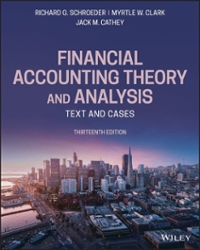Create a WH Framework chart, similar to Exhibit 2.1. Refer to L'Oreal's core values and the primary values in Exhibit 2.3 to determine the guidelines to include in the WH Framework.
- Which stakeholders did Traszka and the management of L'Oreal cater to? Why?
- What values did L'Oreal's management choose when they made the decision to fire Trzaska? Why?
- How did the WH Framework help you analyze the situation?
- Now that you've put together the framework, how does the WH Framework help managers with making business decisions?
- What type of decisions would the WH Framework chart help you make as a manager?
Steven J. Trzaska was the head of L'oreal USA's regional patent team, managing the procedure by which the company patented products. As an attorney barred in Pennsylvania, Trzaska had to adhere to professional rules of conduct established by the Supreme Court of Pennsylvania in addition to rules promulgated by the US Patent and Trademark Office (USPTO). In 2014, L'Oreal S.A, the French parent of company of L'Oreal USA, enacted a global quota of patent applications each regional office had to file each year. Employees were informed that failure to meet the quota would negatively impact their careers and even their continued employment at L'Oreal. Meanwhile, L'Oreal USA simultaneously enacted a rule to increase the quality of patent applications filed with the USPTO. The second rule led to a decrease in number of patents that could be filed with the USPTO, Trzaska's team would not be able to fulfill the patent quota. Faced with the problem, Trzaska informed management that his team would not file patents that they did not believe in good faith were patentable. Several weeks after Trzaska's meeting with the management, he was offered two Page 33 severance packages that he did not accept. Finally, Trzaska was let go. Trzaska subsequently sued L'Oreal, alleging that he was fired for his refusal to violate ethical rules that regulate the legal profession. Which stakeholders did Trzaska and the management of L'Oreal cater to? Referring back to Exhibit 2-5, what values did L'Oreal's management choose when they made the decision to fire Trzaska? [Trzaska v. L'OREAL USA, INC., 865 F. 3d 155 (2017) ]Exhibit 2-2 The WH Process of Ethical Decision Making 1. W-WHO (Stakeholders): Consumers Owners or investors Management Employees Community Future generations 2. H-HOW (Guidelines): Public disclosure Universalization Golden RuleEi-rhlblt 2-1 Enron. WorldCom. and Shifts in Business Regulation During the pH several years, ethics violations have been uncovered in the accounting practices of a number of large companies. Enron and WoddCom were two of the perpetrators in these scandals. Both companies failed to report or record billions of dollars in prot losses, which resulted in stockholders' believing that the companies were in a much better nancial state than actually was the case. Enron's tangled web invoked the company's creating multiple subsidiaries and related companies. These businesses were oen treated as companies independent of Enron and not shown on the accounting books. Enron used the subsidiaries to conceal debts and losses in a very complex fraud scheme. When the company went bankrupt employees who had based their retirement plans around Enron stock lost almost everything Additionally, Enron auditor Arthur Andersen was found guilty of shredding documents about Enron's audits. In June EDGE, shortly after the Enron bankruptcy was announced, WorldCom revealed that it also had engaged in unethical accounting practices. WorldCom's violations included counting prots twice and concealng billions of dollars in expenses when making reports to the SEC. The company thereby made itself appear protable when it was actually losing money. In total, %dCom had more than $T billion in misreported debt. These two cases, among others, left investors understandably concerned about the truthfulness of individuals who were in charge of operating large corporations. Those in charge of these companies had been awarded million-dollar bonuses while completely disregarding stockholders and employees who lost millions of dollars when the companies collapsed. The revelations of Enron and WorldCorn suggested quite blatantlythat the business world could not be allowed to regulate itself ethically. Their downfall in part led to many federal regulations designed to promote truthfulness and ethical practices among business managers. In this new business environment, there is a much greater degree of government oversight to ensure that companies maintain high standards of ethical behavior. Companies are required to make their accounting records far more transparent to satisfy not only the federal government but their understandably wary investors. Exhibit 2-3 Primary Values and Business Ethics VALUE ALTERNATIVE MEANINGS Freedom 1. To act without restriction from rules imposed by others 2. To possess the capacity or resources to act as one wishes 3. To escape the cares and demands of this world entirely Security 1. To possess a large-enough supply of goods and services to meet basic needs 2. To be safe from those wishing to interfere with your property rights 3. To achieve the psychological condition of self-confidence to such an extent that risks are welcome Justice 1. To receive the products of your labor 2. To treat all humans identically, regardless of race, class, gender, age, and sexual preference 3. To provide resources in proportion to need 4. To possess anything that someone else is willing to grant you Efficiency 1. To maximize the amount of wealth in society 2. To get the most from a particular output 3. To minimize costs










